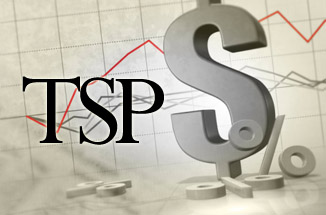
G fund: Super-safe or high-risk investment?
The super-safe G fund of the federal Thrift Savings Plan never has a bad year, but Senior Correspondent Mike Causey says there’s a downside.
Thirty-six percent of all the money feds, retirees and military investors have in the Thrift Savings Plan retirement accounts is in the super-safe, never-has-a-bad-day G fund. Its special Treasury securities (not available to other investors) returned an average of 3 percent over the 10-year period through the end of December 2016. That includes the decline triggered by the Great Recession and the bull market recovery. Not bad, and the G fund beat the I fund (very selective international stocks) that returned only 1 percent on average between 2006 and 2016.
So now what?
The “safety” of the G fund is the main reason tens of thousands of investors pulled money out of the C and S funds during the Great Recession and put it into Treasury securities where it would be safe. The problem is that many sold low — when share prices in their stock funds were way, way down. Many are now considering whether and when to come back into the C fund and S funds, which cover the entire U.S. stock market. The safety of the G fund is a trade-off for its low returns. When they retire, keeping pace with inflation (especially for people under the FERS retirement program) is a paramount concern.
Remember during the same 10-year period, the F fund bonds average return was 5 percent, meaning that a $10,000 investment would be worth $16, 289, compared to $13,349 for the G fund. The C fund (which averaged 7 percent) would have grown to $19,671, the S fund (8 percent average return) would be worth $21,589. Trailing the pack was the I fund (international stocks), which would be at $11,046.
So when, if and how much? That’s the question from one reader:
“I am 62.5, retired and wondering what percent should I have in the C fund and S fund? I currently have most 94 percent in the G fund. I am single and want to make sure it lasts through my retirement.”
— Anonymous
We put the question to a well-known Washington-area financial adviser who has lots of federal and retiree clients. His response was that he wouldn’t touch the question — without a lot more information on the reader’s financial situation — with the proverbial 10-foot pole. He did say we can use this response, but without his name. Here’s what he said:
“I cannot comment for a variety of reasons. One, I don’t know enough about her (how much in investments, how much taking out of investments, CSRS or FERS, dependents, etc.).
“Second, if she invests now, when in the inevitable stock market decline occurs, she will probably pull and lose money.
“I have had clients who started in similar situations. I did encourage them to shift significant amounts from bonds and bank accounts to stock funds. The difference was me. I explained differences in historic returns, how taxes and inflation reduce purchasing power, need to supplement pensions over long periods of time, etc. also we agreed on a stock/bond allocation and when the market tumbles we talk.
“That is part of the value of an investment adviser,” he said.
So what’s your long-range plan and how does the “safe” G fund fit in it?
Nearly Useless Factoid
The word “golf” is used to signify the letter “G” in the International Radiotelephony Spelling Alphabet.
Source: Wikipedia
Copyright © 2025 Federal News Network. All rights reserved. This website is not intended for users located within the European Economic Area.
Mike Causey is senior correspondent for Federal News Network and writes his daily Federal Report column on federal employees’ pay, benefits and retirement.
Follow @mcauseyWFED





